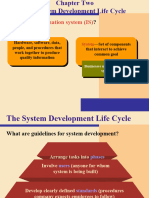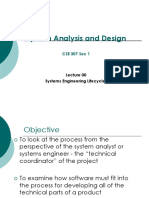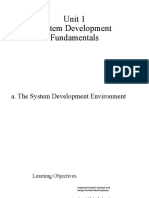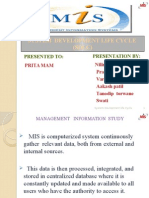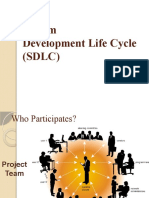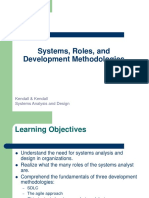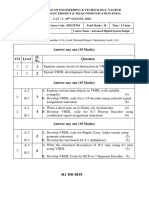0% found this document useful (0 votes)
79 views72 pagesSoftware Engineering
This document discusses software engineering and the system development life cycle. It defines key terms like software, software engineering, and the differences between software engineering and computer science. It also explains the different phases of the system development life cycle including planning, analysis, design, development, testing, implementation, and maintenance. The analysis phase involves conducting a preliminary investigation/feasibility study and performing detailed analysis to determine requirements and recommend a solution.
Uploaded by
Ruchita MaaranCopyright
© © All Rights Reserved
We take content rights seriously. If you suspect this is your content, claim it here.
Available Formats
Download as PPTX, PDF, TXT or read online on Scribd
0% found this document useful (0 votes)
79 views72 pagesSoftware Engineering
This document discusses software engineering and the system development life cycle. It defines key terms like software, software engineering, and the differences between software engineering and computer science. It also explains the different phases of the system development life cycle including planning, analysis, design, development, testing, implementation, and maintenance. The analysis phase involves conducting a preliminary investigation/feasibility study and performing detailed analysis to determine requirements and recommend a solution.
Uploaded by
Ruchita MaaranCopyright
© © All Rights Reserved
We take content rights seriously. If you suspect this is your content, claim it here.
Available Formats
Download as PPTX, PDF, TXT or read online on Scribd
/ 72


